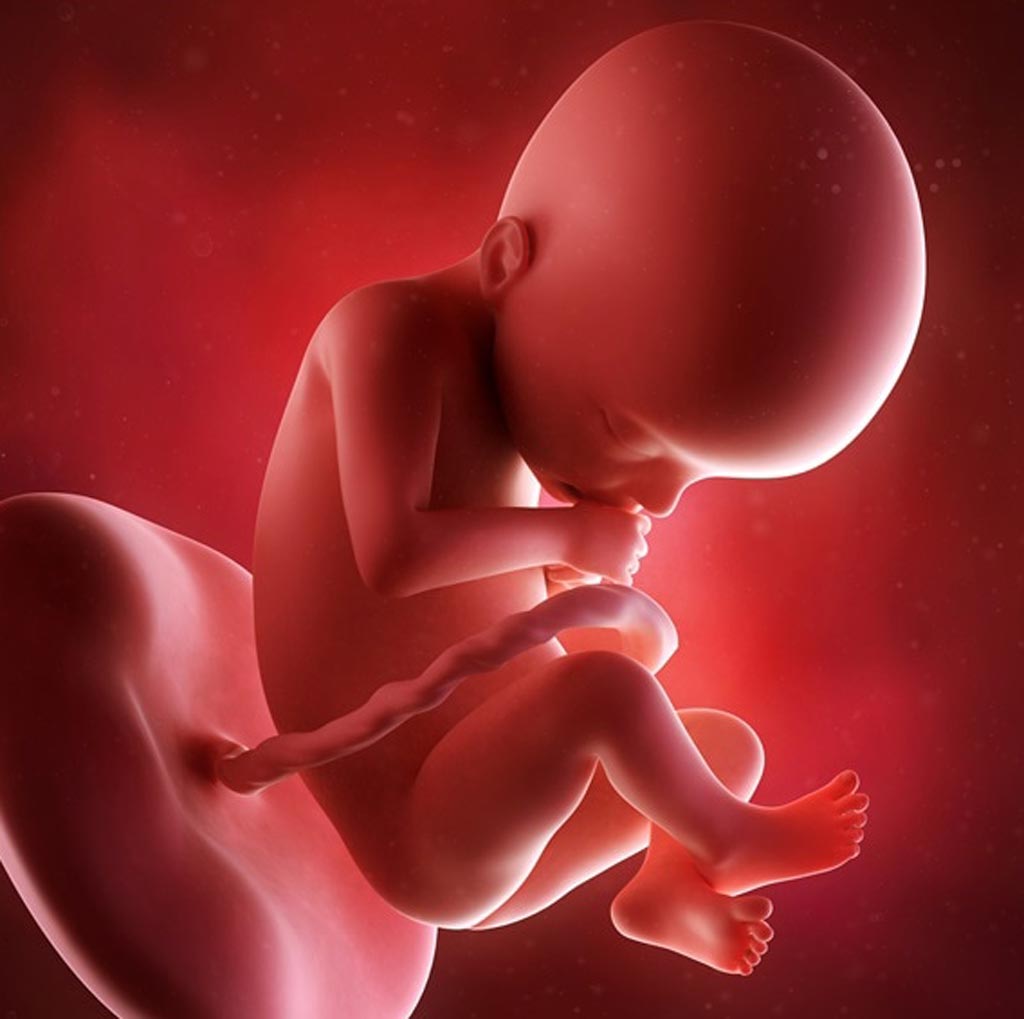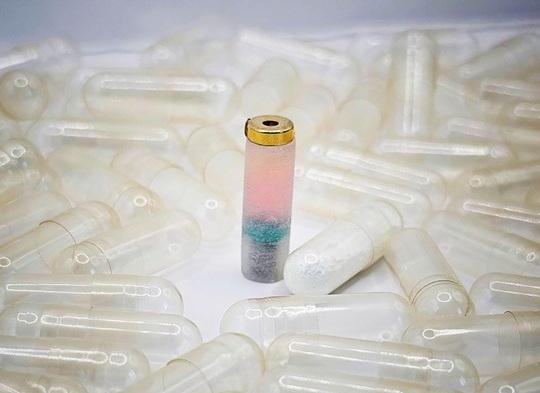Environmental Contaminants Infiltrate Placenta during Pregnancy
|
By HospiMedica International staff writers Posted on 14 Feb 2019 |

Image: A new study reveals that industrial chemicals called perfluoroalkyl substances (PFAS), used in many consumer products, pass through the placenta to accumulate in fetal tissue (Photo courtesy of NewsMedicalNet).
Researchers at Karolinska Institutet (KI; Solna, Sweden), Rigshospitalet (Copenhagen, Denmark), and Copenhagen University (Denmark) conducted a study to measure the concentrations of distinct PFAS in human embryos and fetuses and corresponding placentas and maternal serum samples derived from elective pregnancy terminations and intrauterine fetal death cases. In all, 78 embryos and fetuses aged 7–42 gestational weeks were included for a total of 225 fetal organs, together with 71 placentas and 63 maternal serum samples. PFAS concentrations were assayed by liquid chromatography/triple quadrupole mass spectrometry.
The results revealed that PFAS concentrations in embryo/fetal tissue were lower than maternal serum, but similar to placenta concentrations. The total PFAS burden was highest in lung tissue in first trimester samples and in the liver in second and third trimester samples. The burden was lowest in CNS samples, irrespective of fetal age. The researchers found that placenta:maternal serum ratios increased across gestation, suggesting bioaccumulation in the placenta, and that the ratios were higher in pregnancies with male fetuses. The study was published on January 24, 2019, in Environment International.
“The main source of PFAS substances today is food, in the form of fish, milk, meat, and eggs, or in the drinking water, if you happen to live in a polluted area,” said senior author Pauliina Damdimopoulou, PhD, of the KI department of clinical science, intervention and technology. “We ingest them as a cocktail of substances that can also interact with each other. It would be in line with the precautionary principle in the restriction of chemical substances to make sure that all PFAS substances disappear from our society.”
The PFAS group comprises thousands of human-made chemicals with alkyl chains in which fluoride atoms replace hydrogen atoms, forming strong carbon fluorine bonds resistant to degradation. Thanks to their water- and grease-resistant properties, they are used in everything from frying pans and food packaging to clothes, cleaning agents, and firefighting foams. Many PFAS are regulated due to their bioaccumulative properties and toxicity for reproduction, and one, perfluorooctanesulfonic acid (PFOS) was banned by the European Union in 2008.
Related Links:
Karolinska Institutet
Rigshospitalet
Copenhagen University
The results revealed that PFAS concentrations in embryo/fetal tissue were lower than maternal serum, but similar to placenta concentrations. The total PFAS burden was highest in lung tissue in first trimester samples and in the liver in second and third trimester samples. The burden was lowest in CNS samples, irrespective of fetal age. The researchers found that placenta:maternal serum ratios increased across gestation, suggesting bioaccumulation in the placenta, and that the ratios were higher in pregnancies with male fetuses. The study was published on January 24, 2019, in Environment International.
“The main source of PFAS substances today is food, in the form of fish, milk, meat, and eggs, or in the drinking water, if you happen to live in a polluted area,” said senior author Pauliina Damdimopoulou, PhD, of the KI department of clinical science, intervention and technology. “We ingest them as a cocktail of substances that can also interact with each other. It would be in line with the precautionary principle in the restriction of chemical substances to make sure that all PFAS substances disappear from our society.”
The PFAS group comprises thousands of human-made chemicals with alkyl chains in which fluoride atoms replace hydrogen atoms, forming strong carbon fluorine bonds resistant to degradation. Thanks to their water- and grease-resistant properties, they are used in everything from frying pans and food packaging to clothes, cleaning agents, and firefighting foams. Many PFAS are regulated due to their bioaccumulative properties and toxicity for reproduction, and one, perfluorooctanesulfonic acid (PFOS) was banned by the European Union in 2008.
Related Links:
Karolinska Institutet
Rigshospitalet
Copenhagen University
Latest Patient Care News
- Revolutionary Automatic IV-Line Flushing Device to Enhance Infusion Care
- VR Training Tool Combats Contamination of Portable Medical Equipment
- Portable Biosensor Platform to Reduce Hospital-Acquired Infections
- First-Of-Its-Kind Portable Germicidal Light Technology Disinfects High-Touch Clinical Surfaces in Seconds
- Surgical Capacity Optimization Solution Helps Hospitals Boost OR Utilization

- Game-Changing Innovation in Surgical Instrument Sterilization Significantly Improves OR Throughput
- Next Gen ICU Bed to Help Address Complex Critical Care Needs
- Groundbreaking AI-Powered UV-C Disinfection Technology Redefines Infection Control Landscape
- Clean Hospitals Can Reduce Antibiotic Resistance, Save Lives
- Smart Hospital Beds Improve Accuracy of Medical Diagnosis
- New Fast Endoscope Drying System Improves Productivity and Traceability
- World’s First Automated Endoscope Cleaner Fights Antimicrobial Resistance
- Portable High-Capacity Digital Stretcher Scales Provide Precision Weighing for Patients in ER
- Portable Clinical Scale with Remote Indicator Allows for Flexible Patient Weighing Use
- Innovative and Highly Customizable Medical Carts Offer Unlimited Configuration Possibilities
- Biomolecular Wound Healing Film Adheres to Sensitive Tissue and Releases Active Ingredients
Channels
Critical Care
view channel
AI Heart Attack Risk Assessment Tool Outperforms Existing Methods
For decades, doctors have relied on standardized scoring systems to assess patients with the most common type of heart attack—non-ST-elevation acute coronary syndrome (NSTE-ACS). The GRACE score, used... Read more
'Universal' Kidney to Match Any Blood Type
Blood-type incompatibility has long been one of the greatest obstacles in organ transplantation, forcing thousands of patients—particularly those with type O blood—to wait years longer for compatible donors.... Read moreSurgical Techniques
view channel
Minimally Invasive Endoscopic Surgery Improves Severe Stroke Outcomes
Intracerebral hemorrhage, a type of stroke caused by bleeding deep within the brain, remains one of the most challenging neurological emergencies to treat. Accounting for about 15% of all strokes, it carries... Read more
Novel Glue Prevents Complications After Breast Cancer Surgery
Seroma and prolonged lymphorrhea are among the most common complications following axillary lymphadenectomy in breast cancer patients. These postoperative issues can delay recovery and postpone the start... Read moreHealth IT
view channel
Printable Molecule-Selective Nanoparticles Enable Mass Production of Wearable Biosensors
The future of medicine is likely to focus on the personalization of healthcare—understanding exactly what an individual requires and delivering the appropriate combination of nutrients, metabolites, and... Read moreBusiness
view channel
Philips and Masimo Partner to Advance Patient Monitoring Measurement Technologies
Royal Philips (Amsterdam, Netherlands) and Masimo (Irvine, California, USA) have renewed their multi-year strategic collaboration, combining Philips’ expertise in patient monitoring with Masimo’s noninvasive... Read more
B. Braun Acquires Digital Microsurgery Company True Digital Surgery
The high-end microsurgery market in neurosurgery, spine, and ENT is undergoing a significant transformation. Traditional analog microscopes are giving way to digital exoscopes, which provide improved visualization,... Read more
CMEF 2025 to Promote Holistic and High-Quality Development of Medical and Health Industry
The 92nd China International Medical Equipment Fair (CMEF 2025) Autumn Exhibition is scheduled to be held from September 26 to 29 at the China Import and Export Fair Complex (Canton Fair Complex) in Guangzhou.... Read more
















